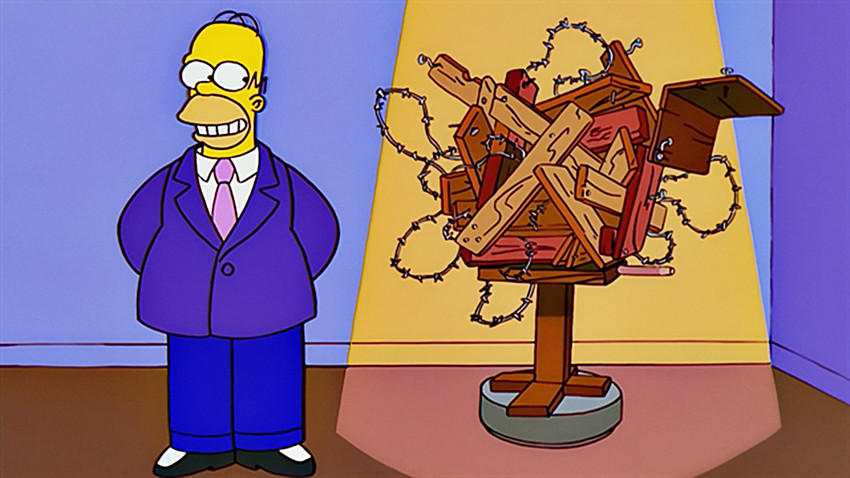How not to be afraid of contemporary art: 5 tips from a Russian gallery owner

Every day gallery owner Sergei Guschin and artist and journalist Alexander Schurenkov explain to their followers on social media (@guschin, ArtFragment) why Malevich is cool, and post quizzes asking questions like: "Is this art or a child's drawing?" Their co-authored book, Contemporary Art, and How to Stop Being Afraid of It, has recently come out in Russia, published by AST. We read it and picked up a few tips.
1. Sort out the classics first
(Here and below click the image to see if you’re right).
You don't need to look far and can start with the Impressionists: they were the first to depict the world in a different way, and their paintings provoked a flurry of negative reactions among contemporaries.
There are several reasons why the Impressionists went for such an unusual style. The first is the invention of portable paints, which made it possible to work in the open air at any time of day or season of the year and to experiment with light, rather than be limited to working in a studio or workshop. The second was the invention of photography. Until then the main goal of many artists was to achieve a maximum likeness of reality in the image, as well as documentation of people and events in the manner of a "court" painter. The invention of photography forced artists to stop copying and start looking for new ways of self-expression.
2. Stop being afraid of the new
We get used to a certain way of living and thinking, and don't want to change. It is the same with art – the new annoys us. On the other hand, there is an interesting paradox. We are happy to use the latest technology – smartphones, for instance – and somehow don't want to go back to the era of dial phones.
In its day, the Hermitage, for example, was also conceived as a museum of contemporary art. Works by Dutch and other artists popular at the time were selected for the collection, but now we regard the Hermitage as a museum of entirely traditional art, and all attempts to add contemporary artists to the familiar displays are met with hostility by most people.
Read more about the scandal of the exhibition of fake Avant-garde artists in Ghent here.
3. Start thinking and feeling
The main goal of contemporary art is to provoke reflection. It gives people the opportunity to contemplate, and even to try to understand what is happening with them personally, as well as with society and the world at large.
Alas, the "clip mentality" that affects people's perception and rhythm of life makes itself felt. Many look for clear-cut, ready solutions. People do not want to stop and think about the meaning an artist puts into their work.
If you are looking at a contemporary work of art, try the following practical algorithm:
- Understand what you are looking at. Is it a painting, a drawing, a print, a photograph, a sculpture or an installation?
- Look at the materials and the technique used in the work of art. How long do you think it took the artist to create it?
- Assess the work of art as a whole. Is there a subject, does it reflect reality or is it a product of the artist's imagination?
- What emotions does the work of art provoke?
4. Work out the context
To understand contemporary art, context is important, and at times it is even more important that the artwork itself. Always read descriptions of artworks, and this will help you understand their meaning. With contemporary art it is often the case that a work of art regarded as incomprehensible and repulsive with time makes you change your mind completely and to adopt an opposite view if you learn a bit more about it.
Study the available information about the artists, and watch feature and documentary films, for example.
5. Stop thinking that you can produce a similar work of art
What is the difference between a child's drawing and a work of art? One of the main differences is a child's inability to give new meaning to their picture. When creating a work, children use simple notions and there is no reflection or serious preparation behind the process. With an artist, the opposite is true - in creating this or that piece they are trying to explain and prove their idea.
First and foremost, contemporary art is not about technique, skill or craftsmanship in the traditional sense of these terms, but about the meaning and the idea. An artist doesn't have to know how to draw. If they do video art, their main language is video; drawing is not something they need to do.
Contrary to the opinion of amateurs, however, the most prominent Russian artists were excellent draftsmen. Wassily Kandinsky graduated from the Munich Academy of Fine Arts. Despite the fact that throughout his life he painted an enormous number of beautiful and colorful landscapes, it was his abstract works that transformed the perception of painting among his contemporaries, and which made him famous.
Read more: Hidden signs of Malevich's 'Black Square'
If using any of Russia Beyond's content, partly or in full, always provide an active hyperlink to the original material.
Subscribe
to our newsletter!
Get the week's best stories straight to your inbox